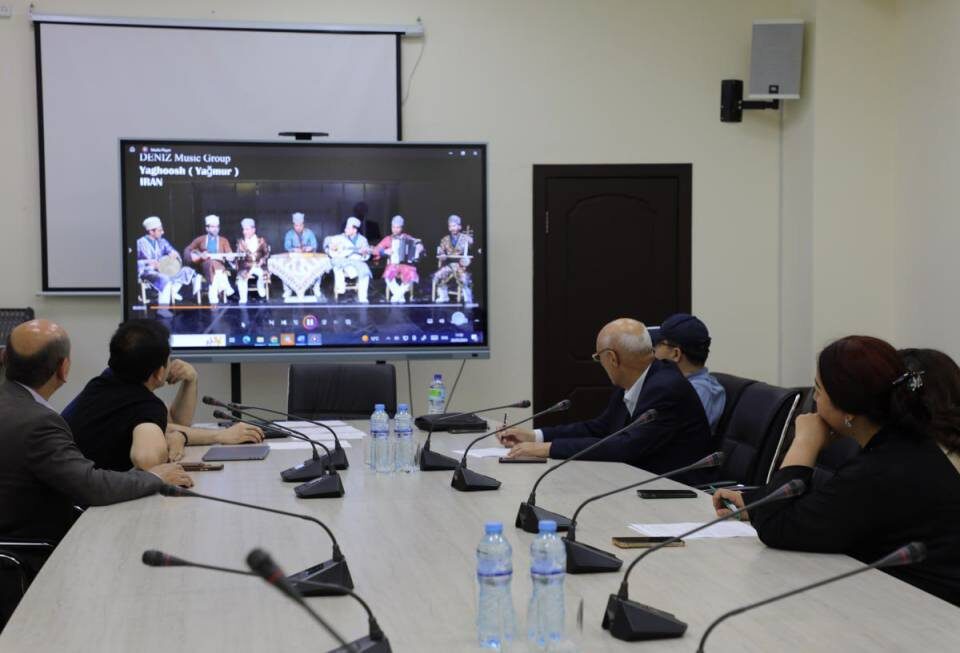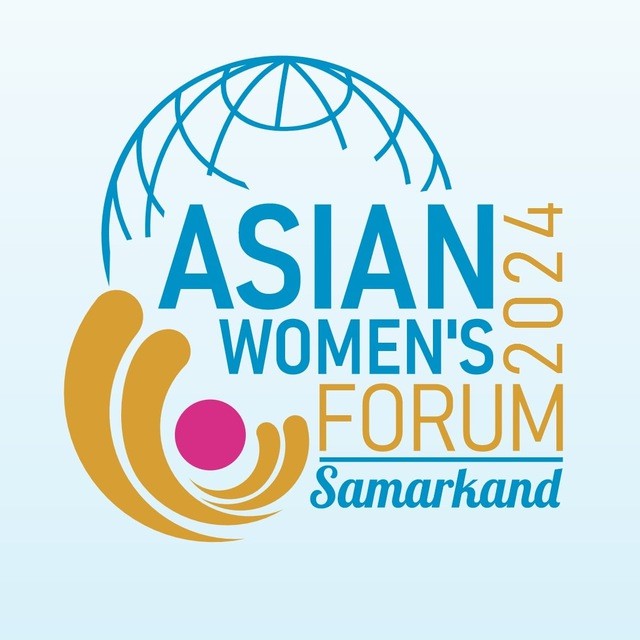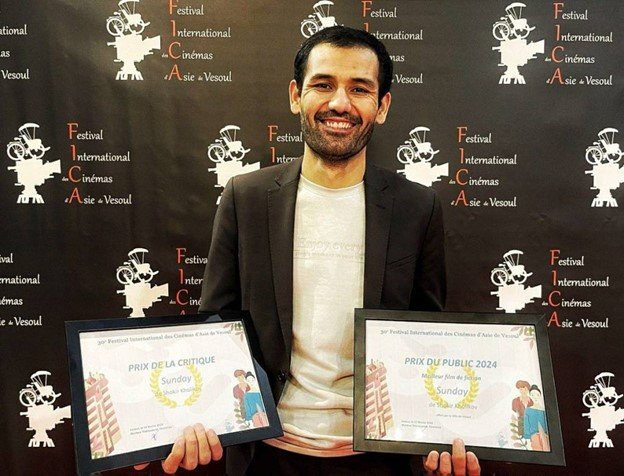The exposition of the museum of cinema art, with nearly 40,000 pieces, begins with a portrait of cameraman Hudoybergan Devanov, a founder of Uzbek cinema. At the turn of the nineteenth and twentieth centuries, taking interest in a new kind of art, he bought one of the first cameras of Pathe for his own savings, and began showing architectural landmarks of Khiva on the screen to his amazed countrymen. It all began with documentaries, to proceed with silent films, live-action, Uzbekfilm studio, animation… The exposition is crowned by a rolled image film, symbolizing that the cinematic art of Uzbekistan still has the best times ahead…
Cinema ranks among the most talked-about topics this year. There is a targeted program on its development. One of the country’s oldest film studios Uzbekfilm has embarked on modernization. Reconstruction and repair of buildings is currently underway, and cutting edge equipment will be purchased by the completion of the works. Movies will be produced at the latest equipment that meets all the achievements of world cinematography, as well as the powerful computer graphics in modern formats. The cartoon studio will start a new life with the most advanced technologies.
A draft law on cinematography, which, in fact, outlines the prospects of development of the national cinema, has been submitted for discussion.
The new legislative initiative proposes the introduction of a whole range of innovations. In order to raise the artistic level and demonstrate national and universal values in domestic movies, the document proposes to establish an advisory council of leading specialists at Uzbekkino. It will be engaged in assessment of the movies that were produced by private studios and imported from abroad, with the subsequent permission for broadcasting them in the country. The advisory council will also classify audiovisual works by groups, except for scientific, sports and educational audiovisual works.
The establishment of Cinematography Extrabudgetary Fund under Uzbekkino is an important aspect of the bill. It will accumulate the funds raised from the release, deductibles from incomes of Uzbekkino structural units and other sources, provided by legislation.
It is worth to mention another mechanism – a Unified Automated Information System on Screening Audiovisual Works, which is destined to be the main source of replenishment of the fund.
The bill provides that the cinema is obliged to report about each session and tickets sold to the Unified Automated Information System on Screening Audiovisual Works. The information should fully comply with the information contained in the ticket, the form of which will be approved as an accountable form, which was used to report on cinema screenings.
The system is designed to ensure the protection of exclusive rights for movies, consumer rights and provision of the authorized body with reliable and prompt information on the state of the internal market of screening audiovisual works. Financial security of software package of the Unified Automated Information System will be provided by Cinematography Extrabudgetary Fund.
Today, Uzbekkino National Agency is assigned with the production of 15 feature films, 20 documentaries and popular science films, 10 animation, and 60 hourly spiritual, enlightenment, scientific and methodical movies a year. The experience of Uzbekistan is studied by many states, because such a funding and support system has no counterparts in the world.
Meanwhile, none of the areas of cinematography stands still. They evolve bоth technically and creatively. For example, a documentary tells about outstanding personalities and sights of the country, covers educational subjects. Live-action films have mastered 4K format and other latest technologies. The diversity of genres has expanded with the release of big-budget blockbuster ‘Baron’ and fantasy ‘Oyqiz Ertagi’. The main animation studio is currently producing the first feature-length film, and private studios have mastered the production of 3D cartoons.
The evolution of national cinema aesthetics was conditioned by gaining independence, and fundamental changes in the social ideology of the nation. This period is featured by the emergence of a new audience and a new poetics of cinema, multidirectionality of style trends (author and viewer movies) in the search for national identity. The period of independence, with radical changes in social ideology, has become a fundamentally new stage in the development of national cinema, making an impact on the establishment and implementation of the final film product. Morphologically, the Uzbek cinema has retained its previous format (live-action films, documentaries, animation, children’s films, etc.).
Liberation of cinema workers from rigid boundaries that previously reigned in their creative expression is one of important achievements in the cinema industry of Uzbekistan during the independence period. It was the period when the idea of the need for state regulation of domestic cinema industry was acknowledged and implemented in government regulations. Cinema network is rehabilitating, private studios appear. Cinema theaters are gradually returning to their core mission of screening movies, which has served as a powerful stimulus for the development of the Uzbek mass cinema.
Over 25 years of independence, the Uzbek cinema Uzbekistan has experienced some positive changes in government support and funding, the lack of which had a negative effect on the development of live-action films of previous years. The government initiated a strong support for the domestic cinema industry. The Decree of the First President of the Republic of Uzbekistan Islam Karimov ‘On the establishment of the state film company of the Republic of Uzbekistan’ and Resolution of the Cabinet of Ministers of the Republic of Uzbekistan of May 6, 1992 paved the way for the establishment of the State Film Company aiming to further develop the national cinema.
The State Stock Company Uzbekkino was founded by the Decree of the First President of the Republic of Uzbekistan ‘On the establishment of the State Stock Company Uzbekkino’ of April 29, 1996, and Resolution of the Cabinet of Ministers of July 12, 1996. The Decree ‘On streamlining cinematography management’ of March 16, 2004, and the Resolution of the Cabinet of Ministers ‘On the establishment of Uzbekkino National Agency’ of March 17, 2004, as a legal foundation for reogranization of the State Stock Company Uzbekkino into Uzbekkino National Agency was the next strategic step in the development of national cinema.
The cinema industry has built its own large audience in recent years. Domestic movies gather full houses. This important social phenomenon, which distinguishes the domestic cinema from that in other Central Asian states, was repeatedly noted by foreign and domestic experts.
In late 20th century, the cinema market of Uzbekistan was replenished with the works of talented filmmakers of several generations. The movies like ‘The Valley of My Fathers’ by Sh. Abbasov, ‘A Stone Idol’, ‘Iron Woman’, ‘Sharif and Marif’, ‘Love’ by I. Ergashev, ‘I Cry Bitterly in My Dream’, ‘The Only Memory’ by S. Nazarmuhamedov, ‘A Soldier’s Tale’, ‘Abdullajon’, ‘Bomb’, ‘Little Doctor’ by Z. Musakov, ‘Who Are You?’, ‘Kammy’ by D. Fayziev, ‘Before the Dawn’ by Yu Azimov, reflect various author styles, the experience of cinematic known schools and creative directions.
There are some important indicators in the dynamics of the live-action films. In the second half of the first decade of the 2000s, the domestic cinema industry started producing much more live-action films than in the early 1990s. Nearly 50 public and private films, including live-action, documentaries and animation, have been annually produced since 2008. Genre and thematic content of the national live-action cinema have also undegone fundamental changes. The baton of great domestic films of 1991-2000s was continued by the movies ‘The Road Under Heaven’ (2005, directed by K. Kamalova), ‘The Spring’ (2006, directed by Yo. Tuychiev), ‘Heaven is My Abode’ (2012, directed by A. Shahabiddinov), ‘Homeland’ (2005, directed by Z. Musakov), ‘Yurt’ (2007, directed by A. Shahabiddinov).
The Uzbek cinema did not neglect such relevant, pressing and destructive problems for prosperous society as religious extremism, drug addiction, criminal thirst for illicit enrichment, etc. This trend is quite clearly shown in the film ‘A Deceived Woman’ (2011), ‘On the Bоttom’ (2012), ‘The Lost’ (2014) by H. Nasimov, and in large-scale projects ‘Traitor’ (2015) and ‘Baron’ (2016) by R. Sagdiev.
The motion-picture process of the end of the twentieth century is featured by certain artistic and philosophical aspects. The realistic attitude to reality, the study of the changes entailed by the increasingly complicating concept of the most important categories of existence – space, time, personality, was reflected in the ‘new cinema’ of Uzbekistan. Displaying specific events in movies, the filmmakers and scriptwriters sought for not isolating them, not carving them out of context, but considered them in a single integrity of verticals – from everyday life to existence, and horizontals – from the past to the future. There is an obvious tendency of inextricable links between the private and the global.
The opportunity of inclusion in the global process of creative achievements and exchange of experience, as well as understanding of positive practices and trends in world cinema is important for the progressive development of national cinema. The Uzbek cinema is confidently integrating in the orbit of the global art process, suggesting that now the country has an effective tool for implementation of truly creative projects, which focus on the rise of international status of national cinema.
There are several areas in the live-action Uzbek cinema today. For instance, it is a focus on mass audience, that is movies without clear spectator or genre orientation, which are obviously biased to the author’s movies (‘The Moon Steals Tired Souls’ by S. Nazarmuhamedov).
Some directors work within the narrative model, with a clearly dominant nostalgic comprehension of the national theme (‘The Valley of My Fathers’ by Sh. Abbasov, ‘The Past Days’, ‘Chimildik’ by M. Abzalov, ‘Chayongul’ by S. Nazarmuhamedov). The others prefer more abstract forms. For example, there is a tendency of conventional forms of expression in the works of many young filmmakers: the screen is willingly and openly turning toward the eccentric, the unconventional. This urge for the strange, the outstanding, is seen at all levels, ranging from the poetics of titles and extraordinary scene collisions to the selection of unusual characters. The armory of irony and eccentrics play a key role in style scripts and such bitter and dramatic films like ‘Little Tabib’, ‘Fellini’. The colors of irony, comic entertainment, eccentric and grotesque permeate the films of these directors.
Understanding of the national context is a fundamentally important for modern cinema. Along with the national spiritual context, domestic movies reflect spiritual and aesthetic space of world cinema. They trace a kind of national perspective on the moral and philosophical problems that are raised in the cinema of other countries.
Filmmakers of Uzbekistan are active participants in international film festivals. Over the years of independence, more than 180 feature films, documentaries and animated films competed in international film festivals and won more than 100 prizes and diplomas in various categories.
The list of participants includes ‘Heaven is My Abode’ (2012, directed by A. Shahabiddinov), the holder of the Grand Prix ‘Golden Vine’ at the Open Film Festival of CIS countries, Latvia, Lithuania and Estonia, ‘Film Shock’, ‘On the Heels of the Dream’ (2004, directed by
Yo. Tuychiev), which received Grand Prix and distributor prize at international film festivals in Aubervilliers (France) in 2006, ‘Chashma’ (2005, directed by Yo. Tuychiev), which won the Grand Prix of the contest ‘Perspective’ in the Moscow International Film Festival, ‘The Road Under Heaven’ (2005, directed by K. Kamalova) – the holder of the specialized Eurasia prize in 2006.
In 2011, the film ‘Postscript’ (2011, directed by Yo. Tuichiev) was awarded three prizes at the International Film Festival of Asian Cinema (France): Ciclo d’Or, Netpac prize and the Guimet Museum prize. The film ‘Yurt’ by the Uzbek director A. Shahabiddinov won the Grand Prix at the International Film Festival Cinemarina (Turkey) and a prize of the International Film Festival Golden Minbar. The film ‘Don’t Forget Me’ (2013, directed by K. Kamalova) is the prize winner of the IFF Children’s Film Schlingel-2014 (Germany).
Today, there is every reason to say that cinema of independent Uzbekistan is an important part of the national art, and an essential factor of the spiritual renewal of society.
Catching Children’s Interest
Mavzur Makhmudov:
Artistic Director of Cartoon Studio, Uzbekfilm Joint Stock Company:
Uzbekkino National Agency pays attention to the development of the domestic cartoon cinema. We are working on a feature-length animated film for the first time. Previously, we produced cartoons no longer than ten minutes.
Problems arose in the very beginning of the work on ‘Nuhot-Palvan’. We needed the script that would keep the child’s attention. The well-known script writer Ismail Shomuratov coped well with this task. The cartoon is full of adventure and intrigue, so we believe that it will turn out funny and interesting.
All the creative powers of the studio are working on the feature animation film. Three animator teams have been working under the guidance of three production directors for a year. We hope we will soon be able to please kids with a good cartoon.
Process Launched
Akbar Bekturdiev, director:
A significant share in the global film industry falls on fantasy films. Young people take a natural interest in such movies. Our mission is to offer good domestic films. Therefore, I took up the fantasy genre with many advanced technical solutions like, for instance, computer graphics, for the first time in 20 years.
I was working on the film ‘Oykiz Ertagi (Oyqiz Fairy Tale) for two years. Its budget exceeded 1.5 billion soums. Everyone who worked on it has grown professionally, especially those who were involved in computer graphics. I am sure that now we can produce films at a higher level, because we have the foundation to build on.
Expanding Cooperation
Asya Batraeva, head of Uzbekkino international relations service:
Days of Japanese, Georgian, Chinese, Italian, Korean cinema, as well as European, Uzbek and German film festivals and children’s film festivals are traditionally held in the country. We cooperate with all the embassies in Uzbekistan to give the audience the opportunity to see the works of filmmakers from various countries.
It has become a tradition to hold Uzbek Cinema Days abroad, just like Cinema Days of foreign countries in Uzbekistan. For example, we have been holding European Film Days for four years in conjunction with the European Union Office for Uzbekistan, which demonstrate the best movies by filmmakers from more than 15 countries, including France, Germany, Spain, Italy, Belgium and others. The Days of Japanese Cinema are annually held in Tashkent for 15 years.
We hold Uzbek Cinema Days abroad. This year, the festival was held for the first time in the Chinese cities of Beijing, Shanghai and Xi’an, which was visited by more than 6,000 people. As part of Cinema Days, we held negotiations with several ministries and departments of China, discussed they ways of further strengthening of ties, and joint film production. Currently, we are negotiating on a feature film project.
Similar festivals were held in Turkmenistan and the Republic of Korea. We work on promoting Uzbek films at the world’s biggest international film festivals.
We will keep introducing people from different countries to the customs and traditions of the Uzbek people. It is scheduled to hold Days of Uzbek Cinema in Greece, Slovakia and China in early 2017.
Days of Uzbek cinema were held in more than a dozen foreign countries, including the United Kingdom, Poland, China, South Korea, Russia and others.
We see it important to reveal, fully support, and advance the professional level of young directors. With this purpose, we organized a short film festival PROlogue.
A Platform for Creativity
Izzatilla Saidjabborov,
Director of the Experimental Youth Creative Association ‘Studio 5’:
The country’s leadership has been attaching importance to the development of all genres of cinema. Documentaries, TV series, cartoons and film magazines are produced along with feature films.
The children’s film magazine Zumrasha (Mischief-Maker), which is produced by our studio, was broadcasted 20 years ago, but lived for about a year. In 2014, the film magazine was revived at the initiative of the First President of Uzbekistan Islam Karimov on the Year of Mother and Child Health. We produce funny and educational videos for the youngest viewers. Our studio has also become an experimental platform for young filmmakers. The magazine is created by exclusively novice directors, under the guidance of experts. There are all conditions for full freedom of creativity for young filmmakers. It is an excellent practice for them.


























